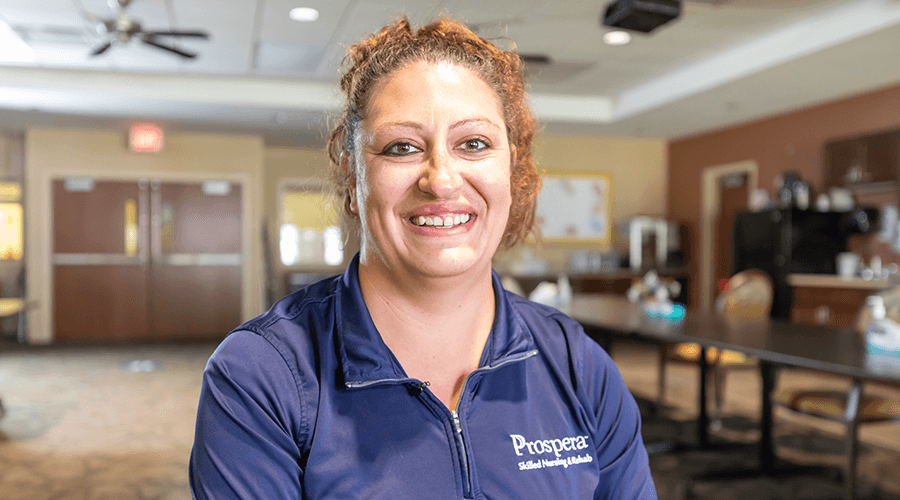The COVID-19 vaccine continues to reach new Good Samaritan Society locations every week. Ninety percent of locations have now had their first vaccination clinic, and 66% of residents have also had their first dose according to Rochelle Rindels, vice president of nursing and clinical services.
Watch now: Rochelle Rindels Facebook Live Q & A
Who gets vaccine priority?
Society staff and long-term care residents are the top priority when it comes to getting the vaccine.
“Once we get through those residents and patient-care facing employees, we’ll really work with the states,” Rochelle says.
Depending on the state, the next priority populations are older adults and people with chronic medical conditions.
“65 and above. We’re seeing some 75 and above,” Rochelle says.
Rochelle says because of the vaccines we are getting closer to fewer restrictions on family visitations.
“The vaccine is really the way that we’ll get to reopen and open our doors wide again,” Rochelle says.
In the meantime, locations are getting creative to help families see their loved ones with compassionate care visits and the essential caregiver program. Other centers are building safe visitation rooms.
Providing new treatment
A new COVID-19 treatment is becoming an important tool for Society residents to fight COVID-19. It is the monoclonal antibody therapy, or bamlanivimab, and it can be administered by Society staff members at some locations.
“I think the most rewarding is when our nurses can start and oversee that infusion from start to end for the residents that they’ve cared for. It’s really the light at the end of the tunnel,” Rochelle says. “Our nurses are just so grateful and honored to give this to residents.”
The "bam" treatment can reduce the severity of the COVID-19 symptoms and hospitalizations for residents.
Watching for variants
The Society is keeping a close eye on different variants of the coronavirus that are popping up around the globe. It is not currently testing for variants at its locations.
“When you have a virus that moves through a large population of people there will always be some variant strains that surface out of that transmission over time,” Rochelle says.
The best example to look at, Rochelle says, is the annual flu vaccine.
“Each year when we have the influenza vaccination, it’s always a quadrivalent vaccine, meaning that covers four variants of the influenza virus. So we’re just starting to see some of those similar variants and that similar process come out in the COVID-19 process as well,” Rochelle says.
Rochelle says the variants do not present more serious symptoms. Still, it’s important to continue washing your hands, wearing your mask and practice social distancing to stop the spread.
Honoring heroes
Rochelle says keeping residents safe wouldn’t be possible without employees who are going above and beyond their call of duty.
“These residents really become family and part of our lives,” Rochelle says.
A nurse herself, Rochelle wants to say thank you to all those health care heroes working hard every day to take care of others at the Society.
“It seems like just your day-to-day work that you would not think twice about doing because you’re a nurse but the deep and impactful meaning that it has for residents and family members is really amazing to see,” Rochelle says.
For more information about how Good Samaritan Society is keeping its staff and residents safe from COVID-19, sign up for our newsletter.
Information in this article was accurate when it was posted. As the COVID-19 pandemic continues, scientific understanding and guidelines may have changed since the original publication date. Read more about the COVID-19 vaccines.
The Good Samaritan Society requires masking in its locations. Anyone shown without a mask was either recorded prior to the masking requirement or recorded in a non-patient care area where social distancing and other safety protocols were followed.


